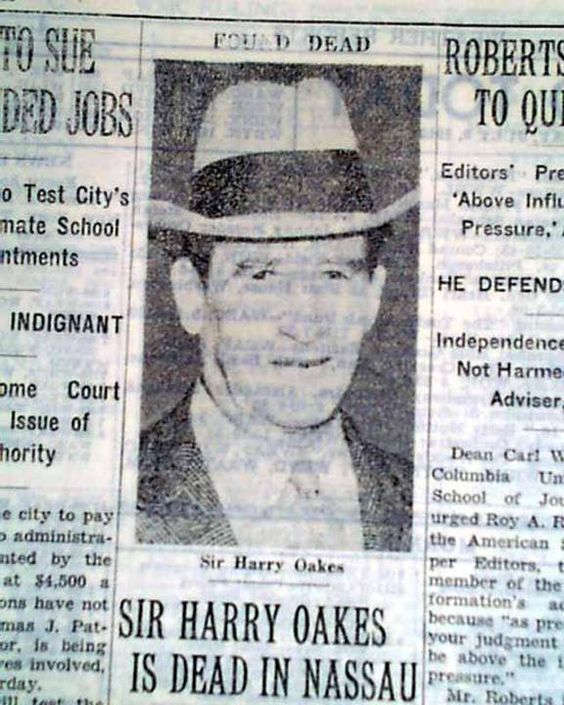On July 8, 1943, Nassau became the epicenter of an investigation into the brutal murder of Sir Harry Oakes. American-born, Oakes made his wealth in Canada before moving to The Bahamas for tax purposes in the 1930s. Oakes, at the time, was a part of Nassau’s elite. He played a significant role in expanding Nassau’s first airport, Oakes Field Airport, and by the early 1940s, Oakes owned approximately one-third of New Providence. His murder, and the subsequent trial of his son-in-law, laid out the corruption and coercion that dominated Nassau’s elite, for all the world to see.
In 1942, Alfred de Marigny married Oakes’ oldest daughter, Nancy Oakes, two days after her 18th birthday. Alfred and Nancy lived in Villa Doyle, the current home to the National Art Gallery of the Bahamas. Harry did not approve of their marriage, as de Marigny was twice divorced and fourteen years older than Nancy. De Marigny became the primary suspect in Sir Harry Oakes’ murder when his fingerprint was found on a screen in Oakes’ bedroom.
The investigation was led by the then-Bahamian governor, the Duke of Windsor. The Duke requested that two Miami-based police officers assist local law enforcement with the investigation. Upon arrival in Nassau, the Miami police reported that they forgot their fingerprint kits, and unfortunately, none were available in Nassau. Eventually, it was discovered that de Marigny’s print had actually been lifted from a water glass he used during questioning with the Miami police. De Marigny was then acquitted of the murder charge, as it was clear he was being framed.
What remains a mystery today is who sought to frame de Marigny and why. In “Blood and Fire,” a book by John Marquis, Marquis argues that the murder was planned by white Nassau elites to prevent Oakes from moving his money and investments to Mexico. Marquis’ evidence implicates Sir Harold Christie, the person to report Oakes dead in the plot, and places blame on the Duke of Windsor for developing the cover-up that framed de Marigny.
Photo: New York Times, July 9, 1943.

